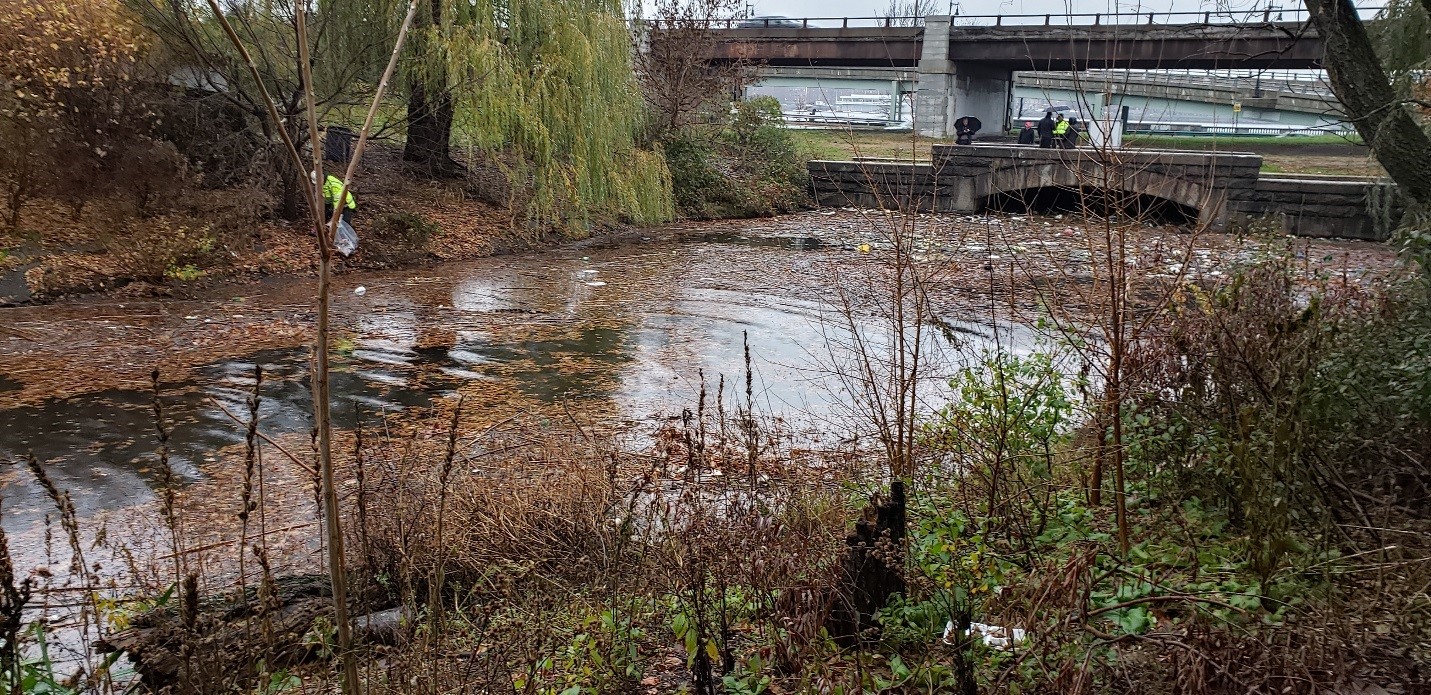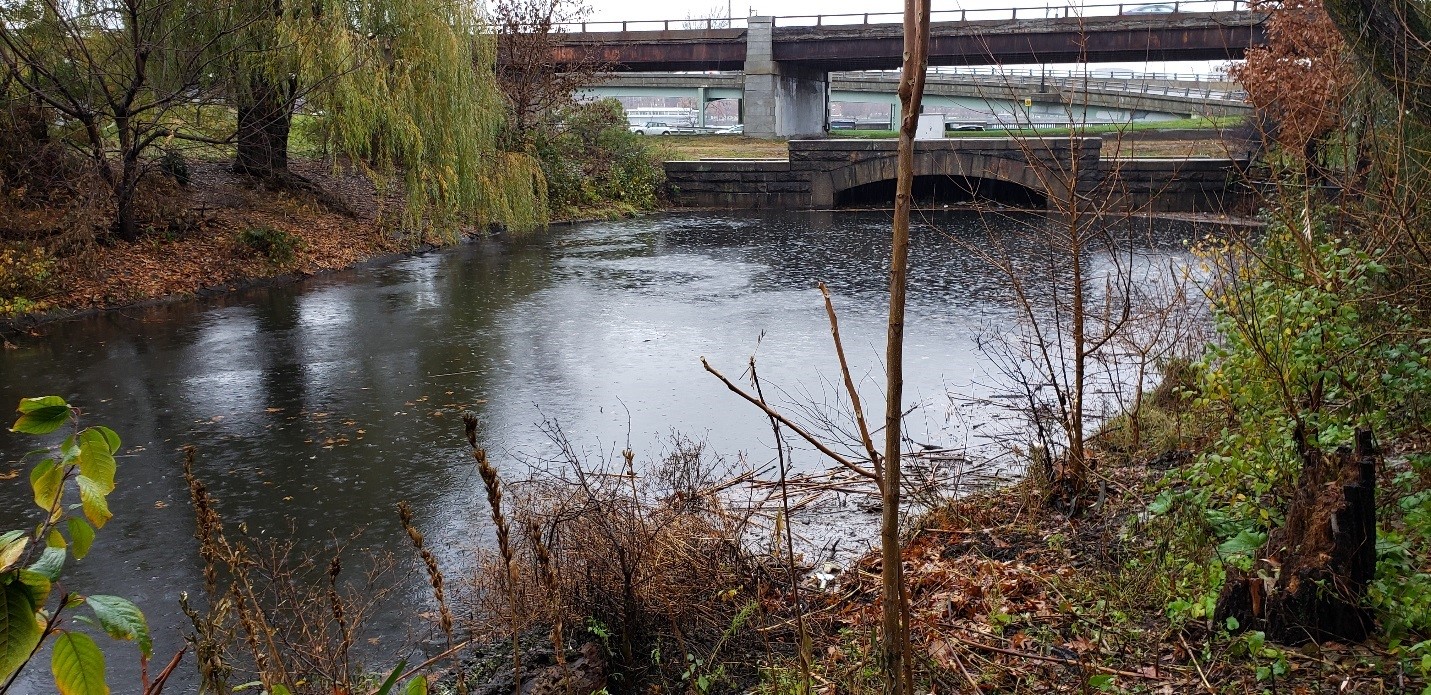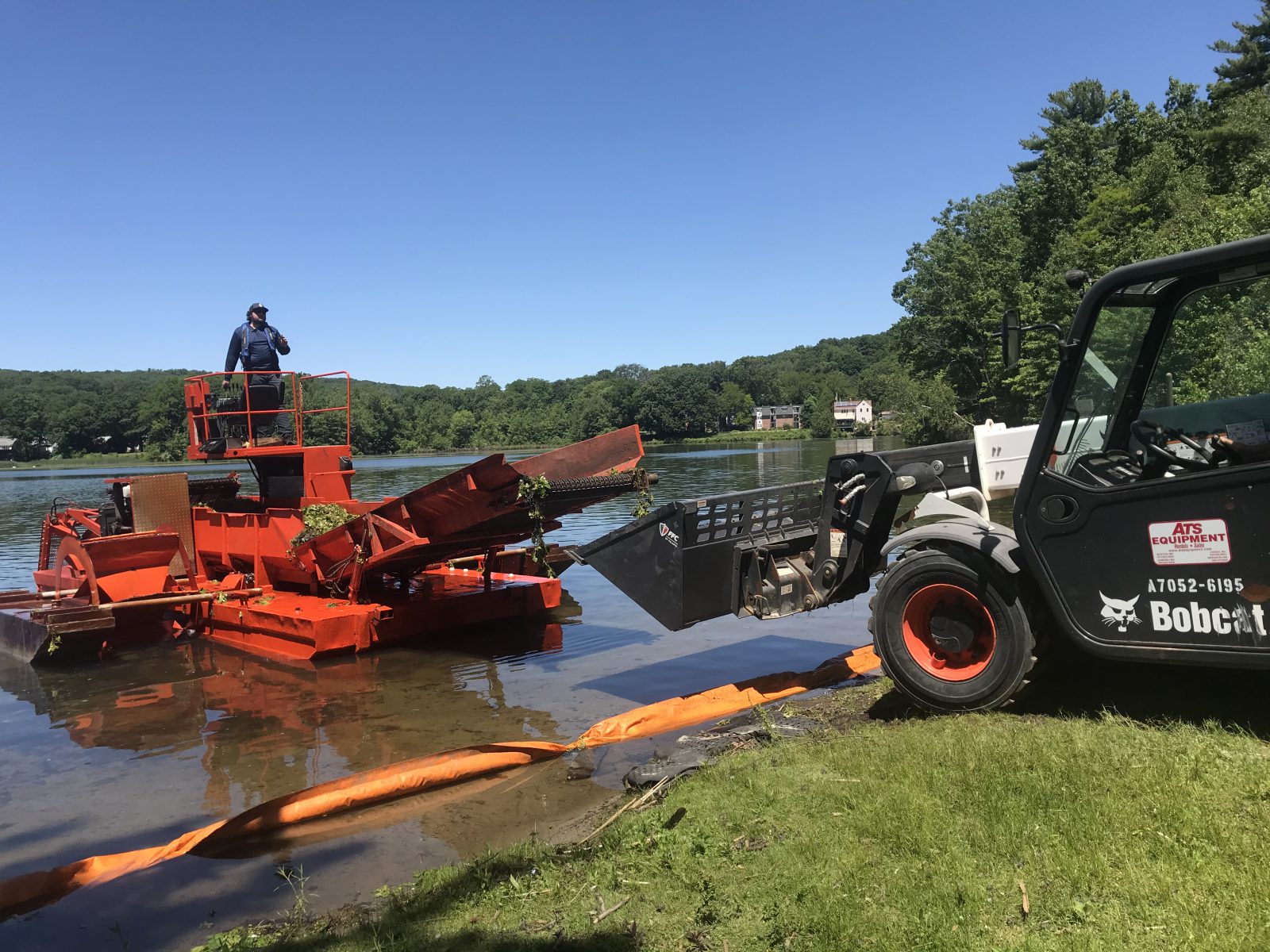
Site Description
Location: Boston, MA
This river is 3.5 miles long stretching through Boston and Brookline. A portion of the river flow passes through a park and throughout the city. The area consists of numerous bridges above the water, including Ipswich Street, CSX Railroad (formerly Conrail), Massachusetts Turnpike (I- 90), Commonwealth Avenue, Beacon Street, and, above the entire Charlesgate area, the Bowker Overpass.
From the Charlesgate area, the river passes through conduits under Storrow Drive and empties into the Charles River. During the 1950s and 1960s, the construction in the area of Storrow Drive and the Bowker Overpass, which connects Boylston Street and Storrow Drive, disconnected the park from the Charles and dramatically decreased the size of the river.
- Harvesting Trash and Debris
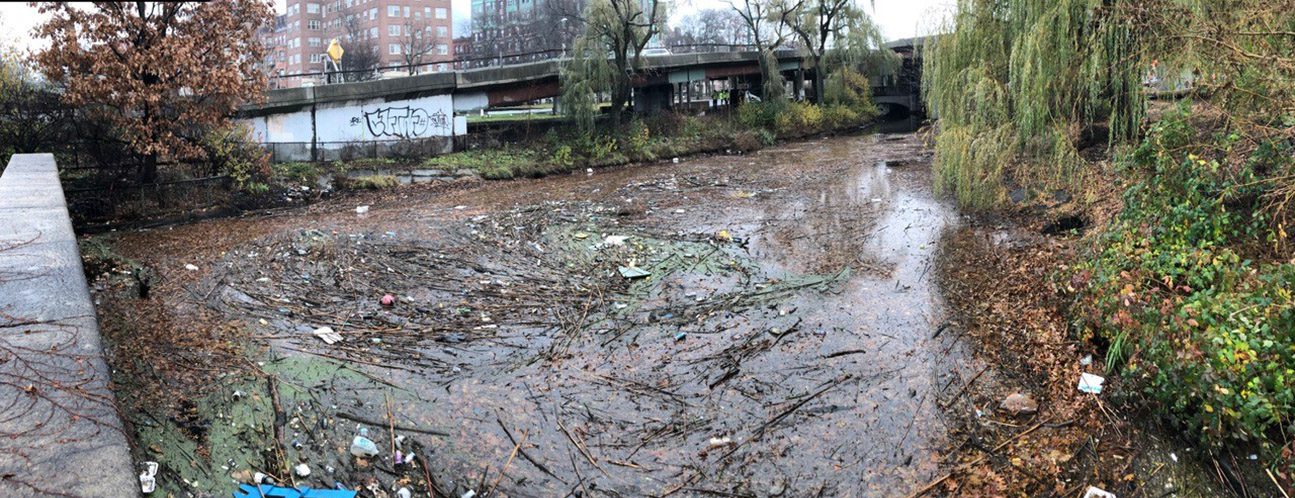
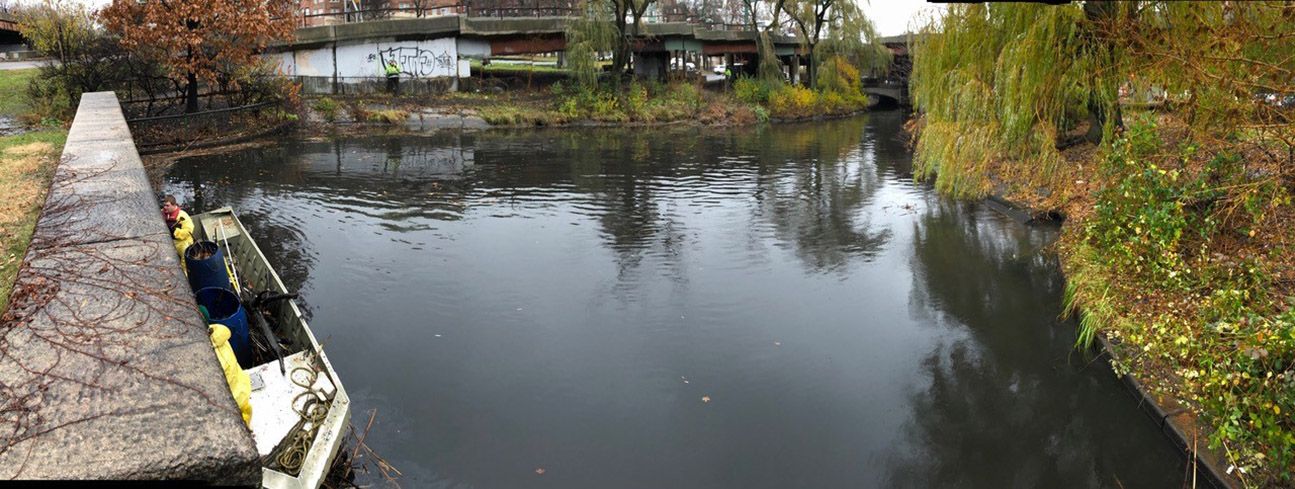
Scope of Work
A major challenge the river faces is the amount of trash being collected in the waterbody. Situated in an urban area surrounded by bridges and streets, the location is continuously becoming a trash pit. Due to the flow of the river, the trash is carried downstream. There is a large gate that is blocking the debris from flowing out into the river, causing the trash to pile up.
For years a New England disposal company has been tasked with collecting the trash by hand in small boats. After meeting with SOLitude Lake Management, it was determined that an aquatic mechanical harvester would reduce the amount of time needed to clean up the area and increase the amount of trash collected.
Project Description
A mechanical harvester was used to remove trash from a 0.62-acre area of the river. The harvesting took place for a total of 1.5 days. The types of trashed ranged from soccer balls to entire shopping carts stuck in the water.
The project was extremely successful, removing a total of 30+ cubic yards of trash, greater than any of the previous cleanup efforts. The company plans to use SOLitude’s harvester for future cleanups on an annual basis of two times per year.
- Trash Removal from River
